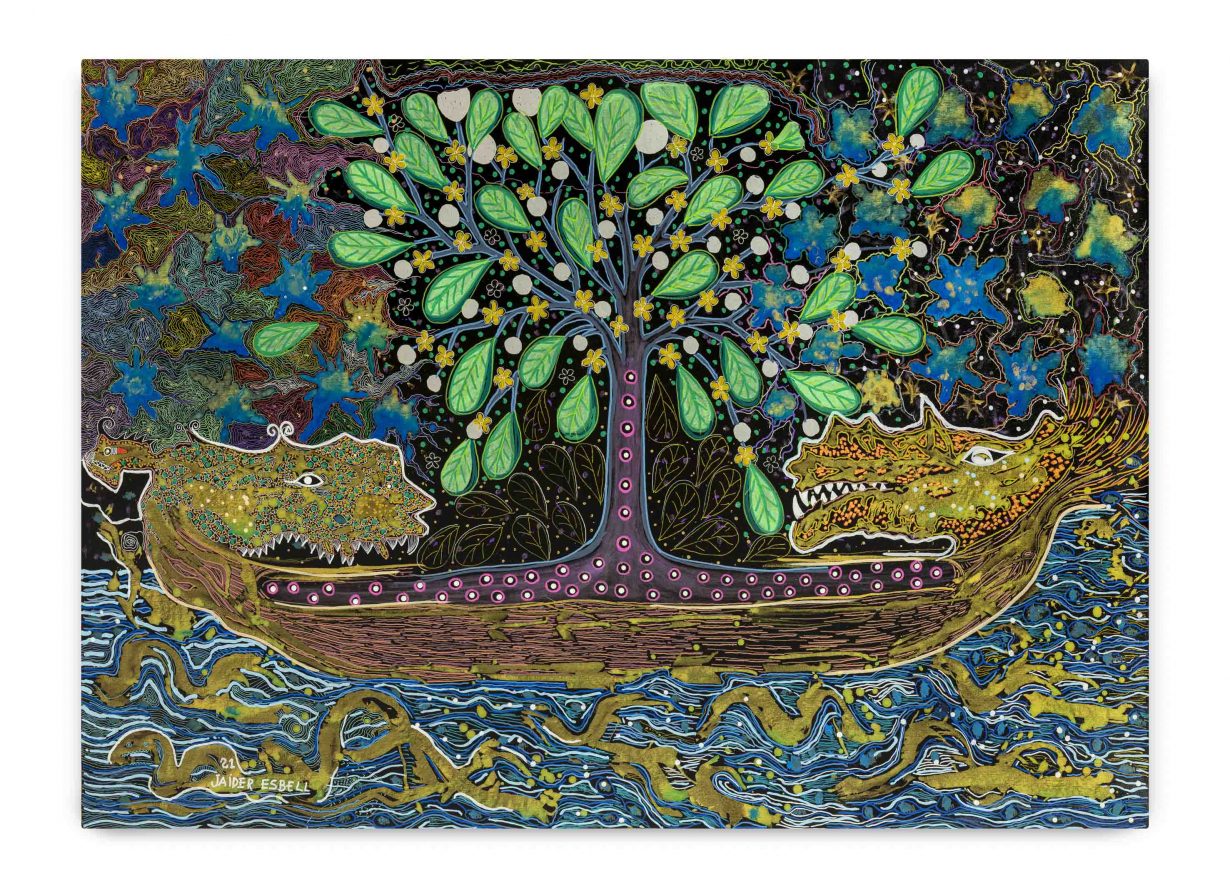
Jaider Esbell, the Macuxi artist and activist, has died. He was a driving force in Brazil’s indigenous art movement. His work is included in the the current São Paulo Bienal, and a survey exhibition he curated featuring work by ingenious peers is currently on show at the Museu de Arte Moderna de São Paulo.
At the bienal, in addition to a approximately a dozen paintings, a series titled Guerra dos Kanaimés (War of the Kanaimés, 2020) depicting the Kanaimé, a potentially deadly spirit in Makuxi tradition, the artist showed Carta ao Velho Mundo (Letter to the Old World, 2021), a book of European art-history, which Esbell had painted and drawn over, denouncing the colonisation of indigenous lands.
His work was recently acquired by the Pompidou in Paris.
“I’ve never taken a course in art history, I’ve never taken a course in almost anything related to art, but very early on I had access to cosmology, right? Another type of art” the artist told ArtReview in a recent interview. “Mount Roraima [a mountain at the centre of Makuxi territory] is an indigenous work of art, a mythological, cosmological, and even geological work of art.”
Outside the bienal’s home, on a lake in Ibirapuera Park, Esbell also installed a pair of 17-metre inflatable snakes. The fierce creatures are a sign of abundance and offer protection to the Makuxi people.
“The Makuxi people are essentially warriors,” Esbell explained. “He has survived to this day because he is a warrior. He knows how to fight, he knows how to make war. A very beautiful war. We fight very well. And one of these days my mother, teacher, said ‘Jaider, go! And take the word of the Makuxi to the world’”.